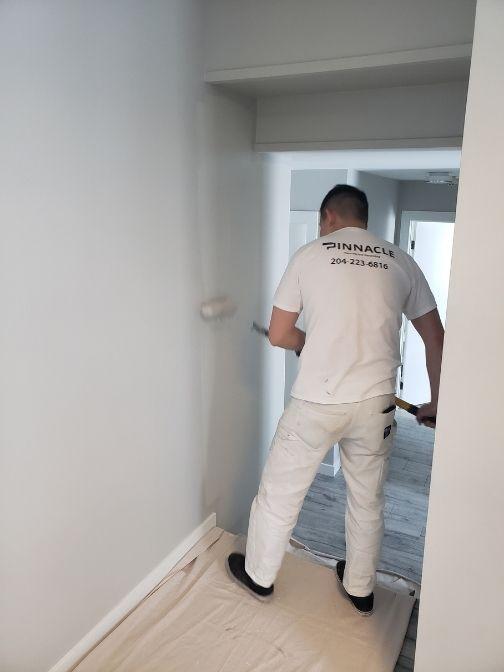15 Mar Can You Use White Paint As A Primer?

A new painting project can be a game-changer. Whether you’re updating your home, opening a new business space, or simply adding a splash of colour where it’s needed, few activities can transform a space as dramatically and quickly as a new coat of paint.
But where to begin? Consulting a Winnipeg painter will set you on the right path, but you may still have questions about the different products that will used during the project.
One of the most common questions people have regarding painting projects is about the differences between paint and primer. What exactly is primer, and what is its purpose? Is it necessary in every circumstance? How about products that advertise paint and primer all in one? And…can I just use white paint instead?
Speaking directly with your painter will always give you the most relevant information for your particular situation. In the meantime, however, let’s take a look at some of these questions and see if we can prime ourselves for upcoming projects using laypeople’’s terms and explanations.
What Exactly Is Primer?
Primer may look like paint, but it has a different composition. It has more resin and less pigment than regular paint. Big deal? Actually, yes. Without getting too technical, this basically means that primer is perfect for sealing and smoothing surfaces, hiding stains, and creating a “paint-grabbing” base layer that will ultimately result in an even and long-lasting paint job.
Without primer, paint can be absorbed by porous surfaces. This can result in an uneven distribution of colour and old paint can show through, especially if you’re transitioning from a darker colour to a lighter colour. Without primer, your paint job can begin peeling much sooner, and you may not have the smooth, sealed surface necessary for a quality paint job.
Paint and primer are different products with different purposes, and it’s actually important to use them properly. The good news? Primer is usually less expensive than paint! So, while you may be impatient to get that new hue on your walls, you can feel satisfied knowing that you’re ensuring a quality job and also saving money by using primer, first.
Do I Always Need To Prime?
As a general rule, it’s always best to prime, but there are times when you may be able to get away without it. Such circumstances might include painting a similar colour over walls that are already clean, painted, and sealed. Or perhaps when updating from a lighter colour to a darker colour. It’s best to consult your painting team before making a final decision.
Primer is definitely a must for the following conditions:
- Painting drywall, bare wood, or other naturally porous materials
- Painting a glossy or very smooth surface
- Painting a surface with an odour (such as smoke)
- Changing from a darker to a lighter colour
Primed for Success
Many newer products claim to eliminate the need for priming or speed up the painting process with combo technologies. But most painters still agree that nothing beats the cost-effectiveness and quality of just taking the time to prime before you paint.
